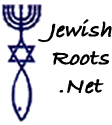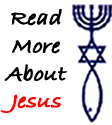






![]()
There was a ritual on Yom Kippur that Rabbi Ishmael described in the Talmud (Yoma 68b). It had to do with the two goats that were the main object of worship. One goat would be sacrificed as the substitute blood atonement for Israel’s sins. The other goat was allowed to go into the wilderness, symbolically carrying away the sins that the nation was seeking forgiveness for. This ritual focused on the scapegoat known as Azazel.
In this custom, a crimson thread of wool is tied to the door of the sanctuary. When the scapegoat reached the wilderness, the ritual of the goat carrying away the sins was complete. The high priest would know that God had forgiven Israel, because the crimson thread of wool would change color. God would divinely change the color from crimson (red) to white. This reflected Israel’s new standing with God as a forgiven nation.
It is possible that some of these rituals were performed as far back as Solomon’s Temple. It is believed by many that Isaiah referred to this event when he wrote, "though your sins be as scarlet, they shall be as white as snow.” (Isaiah 1:18)
How blessed Israel was to know their sins were forgiven.
While Jesus was alive, he had many followers. After he was crucifies and then resurrected, the number of believers that followed his teachings that he was the Messiah greatly increased. The first century church was mostly Jewish, including most of the authors of the New Testament. There was a split inside Judaism, and those who recognized Jesus became what is known as Messianic Jews or Christians. In 70 A.D., when the temple was destroyed, Judaism had to change, because obviously, they could no longer offer the two-goat sacrifice on Yom Kippur. Without the temple, there couldn’t be any blood sacrifices at all. Biblical Judaism changed into Rabbinical Judaism as the Rabbis created their own set of laws.
Charity was one of the things that the Rabbis chose to replace the biblical path to atonement, which is blood (Leviticus 17:11). Complimented by prayer and penitence, these three things now replaced the sacrificial rituals that God instituted in the Old Testament. The Jews that believed in Jesus understood that Jesus' blood was the substitute for the animal sacrifices. Jesus died around 30-32 A.D. The temple was not destroyed until 70 A.D. If the temple was still standing for 40 years after the death of Jesus, then what became of the crimson string? Jesus had claimed that the only way to heaven was to accept him as our substitute sacrifice. All those who are Jews searching for the truth as well as Christians should ask the question, "what happened concerning this ritual in between the time of Jesus' death and the destruction of the temple?"
Jews who didn’t believe that Jesus was the Messiah wrote the Talmud. They did, however, recognize that he lived, that he was Jewish, and that there were miracles performed by him. They recognized his death, and they recognized that after his death his tomb was empty. There is another thing they recognized about atonement after his death.
For forty years before the destruction of the temple the thread of scarlet never turned white but it remained red. Talmud- Mas. Rosh HaShana 31b
This sign was just one of the Four Signs Of The Coming Destruction Of The Temple.
Temple related articles of interest include:
Read about the holiday of The Day Of Atonement - Yom Kippur.